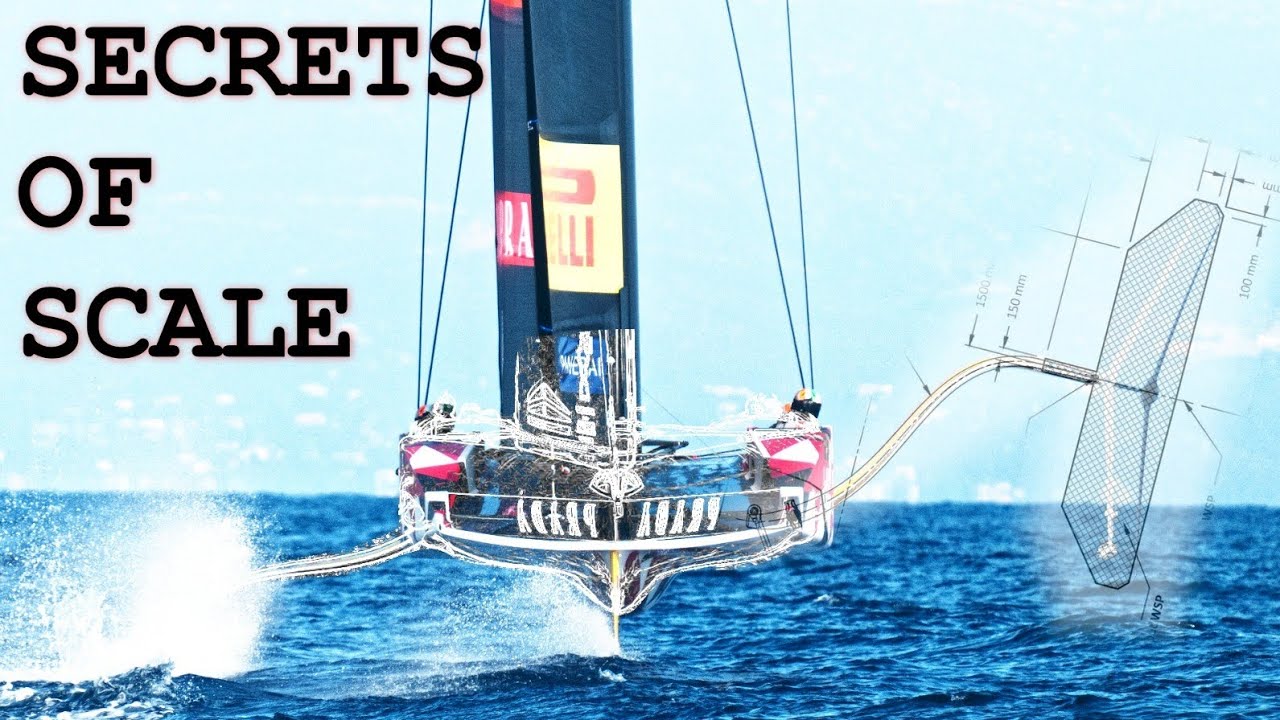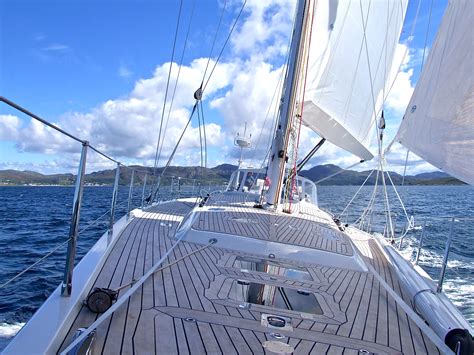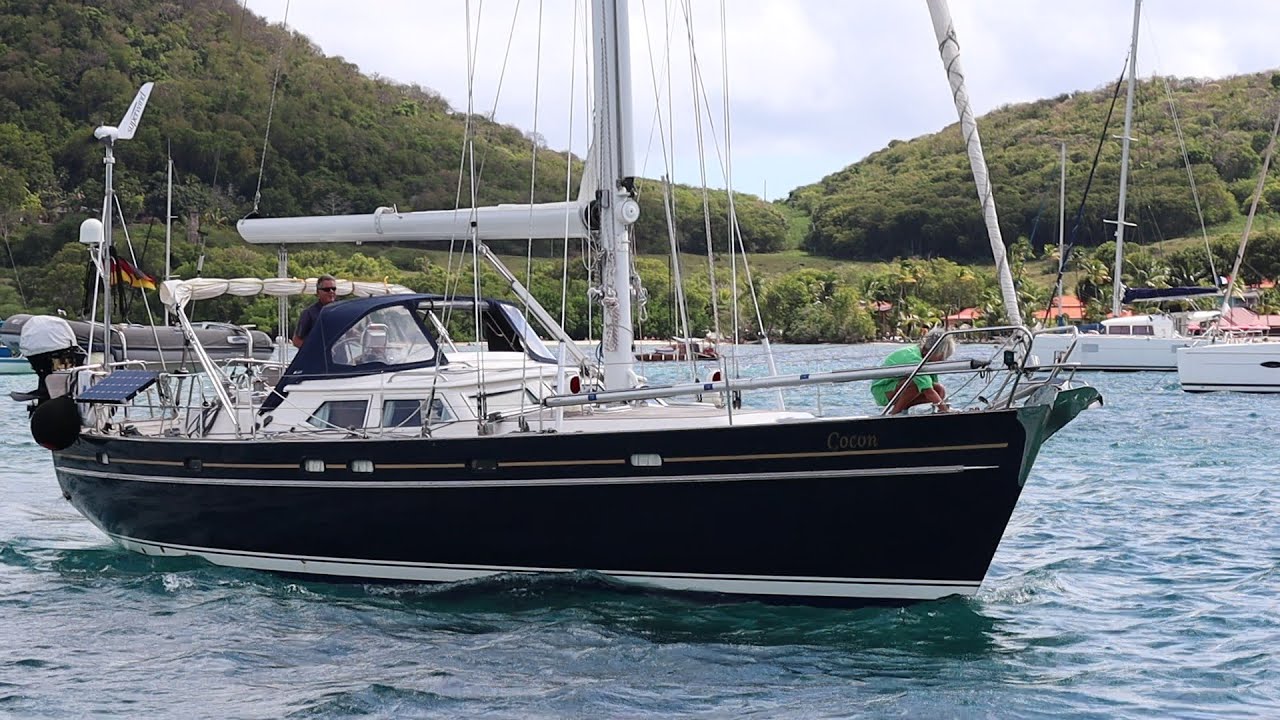O alegere definitorie a Cupei de până acum a fost dacă echipele folosesc un AC75 vechi de dimensiune completă cu piese vechi SAU produc o platformă de testare în miniatură cu tehnologie de generație următoare. Acestea fiind spuse, scalarea este mult mai ciudată decât pare la prima vedere, așa că merită să înțelegeți compromisurile pe care le-a făcut fiecare echipă. Mulțumesc lui Emsworth Radio Sailing pentru că mi-a permis să sar în apă alături de cursele lor de duminică. Dacă sunteți interesat de RC yachting, consultați site-ul lor aici: https://www.emsworthradiosailing.org/ Credit video și fotografii Recon pentru Recon Photographer / @America’s Cup #MozzySails susținut de Allen Brothers (fittings) Ltd Utilizați codul ” MOZZY15 ” la https://www.allenbrothers.co.uk/ pentru a solicita o reducere de 15% https://www.craftinsure.com/ Craft Insure: Asigurare pentru ambarcațiune cu un marinar din Dinghy de curse la cârmă #AmericasCup #AC37Recon #AC37
source
Scalarea iahturilor AC este mai ciudat decât crezi

29 thoughts on “Scalarea iahturilor AC este mai ciudat decât crezi”
Comments are closed.




I doubt the teams are going for geosyms/with all around scaling… besides basic Froude scaling (time is square root, length scale factor , weight/force scale cubed.. the rest derived) there are Reynolds number effects with different scaling approach for areo and hydrodynamic forces (boundary layers do not scale!).
Scaling for foiling boats would be more akin to wind tunnel testing than classic displacement or planing boat Froude scale testing with prediction of full scale lift & drag …
I think the practice boats serve several purposes. For example, foil optimization can be conducted using representative loading … getting similar loads on a foil … at similar speeds … whats above the water does not matter much.
Also.. if you are at representative speed and load, you can evaluate options head to head… this not really scaling..
Another function of the test boats is evaluating hardware such as the main sheet system you have reported on .. doesn't need a true geosym scaled vessel .. better to have something representative of full scale loads at full size .. in places, but not the whole boat
Also as you mentioned.. crew work, human interfaces and the like don't need a scale vessel.
I spent a lot of time at tow tanks with a wide variety of boats … and scaling, while very useful…. has its limits
Very much enjoy your vids and always look forward to your analyst's
A radio yacht sailor I knew built a scaled down version of a local 80ft canting keel yacht here in Sydney. It was a real work of art, with a complicated series of servos and remote controls.
The result was a scale yacht that couldn't sail in wind over 6kts…
In the water commentary is the new bar. Great update Tom, Happy Friday
Innovation at the cost of sail handling has done nothing for the sport.
Love the water intro – fascinating insight to the scale that I hadn’t thought of.
Could INEOS just be trying “full size” or closer to foils in testing and accepting the other foil in water as byproduct ?
Great video, adding interest to the AC! I'd love to think INEOS were deliberately testing something by having the windward foil dipping in, but there must be great value in all that time on the water that Team NZ are getting. I think all teams will have good hydrdynamicists, and whilst I'd hope that INEOS could benefit from the input of Mercedes, hydrodynamic design remains something of a black art. Really interesting about the change in cant rules, is there no fixed limit on can't angles and can teams use downward hydrodynamic forced on the windward foil? Someone was speculating about this in recent comments. Outstanding intro to this video, however!
This video would be a great introduction to a university lecture on dimensional analysis, scaling laws, and Buckingham pi theorem. At first I thought this was going to be about Reynolds numbers, but was quickly reminded of how much more (basically, everything) is affected by scaling laws.
Speed is an interesting one. Like you say, visually perceived speed is based on how quickly the boat travels its own length, so inversely proportional to length. But in an engineering sense, non dimensional boat speed is a Froude number, which is inversely proportional to the square root of length. But that's only in displacement mode. Whole different set of laws once the boats get up on the foils. Better hope the engineers on these teams dug out their text books and boned up on Buckingham pi theorem. Maybe they'll come up with a new non-dimensional number to add to Froude, Reynolds, Mach, etc…
lets see more sailing, put the commentator in a small box at the top of the screen thanks R A Percoco
Hi Mozzy, does that explain why the Ines platform appears unstable and skittish when foiling? I know we only get to see small snippets of the runs, bot the other platforms do appear more stable when foiling. Please keep up the great work!
It would help t
Faster turning to have that pivot point blade in the water.
Really interesting insights into a very difficult engineering problem. Molecules, and thus the behaviour of fluids, cannot be scaled so there are formulas to correct for this, but it is really very complex and beyond me. Thanks for a great video. Here is my effort at 1:10 scale. https://youtu.be/pPsHgScvGg0
The first fundamental question for me is what are they testing with scale “models”. When you assume everything it is confusing but if you think what can they test with scaling maybe it becomes clearer.
This channel is about to blow up , since Americas cup will also blow up
What about the crew they would need to be scaled. i.e smaller
No one seems to be speaking about the latest nose dive footage: https://www.youtube.com/watch?v=XCZdTSDHGkI
Video quality from this Channel is on the incline. 👏
Is water line a factor when hull is not in the water.
Well what does Ineos decision to change arm shape affect?
-It shifts weight further into the wind.
-It adds drag but this drag has the feature that it has a better leaver to counter the drag of the operating foil than the rudder itself (keeping boat direction)
– it might even pull the boat into the wind. This might actually help keep the direction of the into direction of the hull. Wind should push the boat parallel to the surface downwind. If you manage to decrease this, it should decrease drag on the operating foil and rudder (by lowering shear forces on the rudder and vertical section of the operating foil)
– it probably adds weight to the boat (longer arm)
Would love to see their summary about this topic. Any other things I am missing?
Remember when you reduce something in 'area' it's 'squared', like sails, appear 'flat' but a 3 dimensional object is 'Cubed' when enlarged or reduced, plus the density of air is exactly the same at any scale and water density is the same, so… that's only part of the issue…
What is your favorite team?
My brain fell out about 4.10 in 🤭
A former model sailor here, engineer and successful participant in a WC, sailing experience from dinghies to tall ships, monos, cats and fast trimarans.
You can't scale sailing boats, simple as it is!
– speed across the water surface is to be scaled with the square root of the scaling factor
– weights are to be scaled in the cubic
– areas (forces in sails and foils) are to be scaled in the square
– Reynolds are in linear scaling
– wind vs boat speed is different
– the wind gradient with the distance of the water surface is different
…..
So with every scale the balance of forces, … is different resulting in differences in concept, performance and handling.
A factor two in length does make a significant difference in the real world
But you can validate your simulation models, design concepts, algorithms, …
But you have to keep in mind: the more data you get out of successful sailing, the better it is. I do see the Kiwi team and America on a good path of preparation – with a very different approach.
A great video highlighting the complexities involved in scaling boats. I suspect that the AC40 ETNZ platform is actually the most useful for development purposes given that it has a fixed set of variables, only those that are modifiable in the full size AC75. It is also probable that boat and hull design will play a much smaller part in the AC37 compared with sail control and boat handling thereby reducing the need to exactly scale these development boats.
I Ave grave concerns around INEOS and the path the are going down.
The lengths that you go to for the cause😂
It's strange that No one has mentioned the hull shape on Luna Rosa similar to Te Rehutai 🏆
Two NZ AC-40’s on the water in Auckland – Two Boat testing could he vital!
Similitude or scale effect normally works against you as you increase in boat size. For example if you were scaling a catamaran of 10m which weighed 1000kg and had 100m sqm of sail area, to one of twice the actual size, you would end up with a 20m boat weighing 8000 kg with 400msq of sail area. The sail area to displacement ratio tumbles by half. This assumes the same structural stiffness is retained in the larger version. In reality bigger structures end up floppier or less stiff and less robust, which can lead to structural fragility – been there!